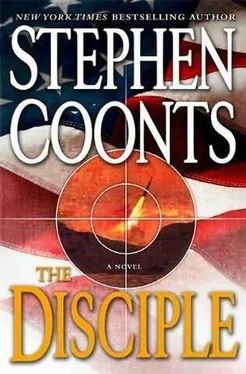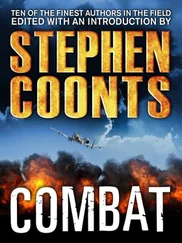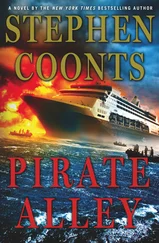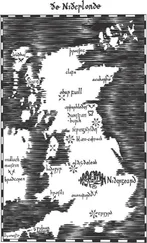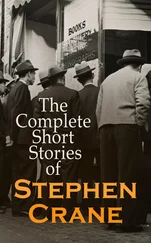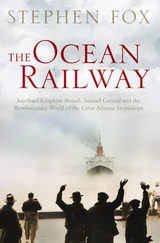Stephen Coonts - The Disciple
Здесь есть возможность читать онлайн «Stephen Coonts - The Disciple» весь текст электронной книги совершенно бесплатно (целиком полную версию без сокращений). В некоторых случаях можно слушать аудио, скачать через торрент в формате fb2 и присутствует краткое содержание. Жанр: Триллер, на английском языке. Описание произведения, (предисловие) а так же отзывы посетителей доступны на портале библиотеки ЛибКат.
- Название:The Disciple
- Автор:
- Жанр:
- Год:неизвестен
- ISBN:нет данных
- Рейтинг книги:4 / 5. Голосов: 1
-
Избранное:Добавить в избранное
- Отзывы:
-
Ваша оценка:
- 80
- 1
- 2
- 3
- 4
- 5
The Disciple: краткое содержание, описание и аннотация
Предлагаем к чтению аннотацию, описание, краткое содержание или предисловие (зависит от того, что написал сам автор книги «The Disciple»). Если вы не нашли необходимую информацию о книге — напишите в комментариях, мы постараемся отыскать её.
The Disciple — читать онлайн бесплатно полную книгу (весь текст) целиком
Ниже представлен текст книги, разбитый по страницам. Система сохранения места последней прочитанной страницы, позволяет с удобством читать онлайн бесплатно книгу «The Disciple», без необходимости каждый раз заново искать на чём Вы остановились. Поставьте закладку, и сможете в любой момент перейти на страницу, на которой закончили чтение.
Интервал:
Закладка:
Today I soon had Jake Grafton on the line.
We chatted a little bit about this and that, then he told me that I was onstage. Azari’s Iranian contact would contact me within the next few days.
“Tell me about this guy,” I prompted.
“Don’t know much to tell. Code name Rostram. Could be anybody. He’ll introduce himself with that name.”
It was a short conversation. After I said good-bye and broke the connection, I sat in my little plastic womb contemplating my navel. Azari’s Iranian contact now knew my name, or soon would, knew I was an officer in the CIA and would be looking for me. If Azari was indeed under the control of the MOIS, they would soon know what he knew.
I felt like the guy who wrote a letter to the Devil informing Him that his soul was for sale.
These ruminations didn’t get me anywhere, so I crawled out of the booth, tucked it in the corner, and went along the hallway to the Pit. Frank Caldwell was there, swilling coffee. As usual, he wanted to chat a while in Farsi to improve my grammar and diction. Today I wasn’t in the mood. I stayed in English, and he switched back.
“You look cheerful this morning,” he said. His medium-length hair was turning fashionably gray at the tips, and he wasn’t carrying any extra weight. He looked, I thought, like a model in a Cabela’s fishing catalog.
I tried to smile.
“Can’t let the world get you down, Tommy. Keep your chin up.”
A snotty remark almost leaped from my lips, but I managed to stifle it. I pushed the button to summon the first supplicant of the day.
Habib Sultani adjusted the large, heavy binoculars on the stand in front of him and turned the focus knob. He stared through the lens, trying to estimate how far he could see. Then he took his eyes away from the binoculars and once more surveyed the shore, sea and sky. It was a high, hazy day, with excellent visibility, yet the sky and sea seemed to merge out there somewhere, just fade into each other without a definite horizon.
Sultani was standing on a bluff on a promontory that jutted out into the Strait of Hormuz, which was about thirty nautical miles wide at this point. On both sides of the promontory, sand beaches marked the sea’s edge, but below the bluff there were rocks. If one listened carefully, one could hear the steady pounding of the long rollers being pushed through the Gulf of Oman from the Arabian Sea.
To his right, almost immediately below, in a small natural harbor formed by several large rocks, were three gunboats of the Revolutionary Guard. They were manned, with engines idling, their coxswains holding them in place. Each boat carried a Russian-made 37 mm gun mounted amidships.
Sultani glanced at the boats, then put his eyes back to the binoculars.
Yes, he could see ships in the strait. There was a loaded oil tanker off to his right, heading south, from right to left, after rounding the tip of Oman, which was on a peninsula that jutted out from the Arabian landmass. The tanker would pass about twenty miles out, eight miles beyond the twelve-mile limit for Iran’s territorial waters. Near the tanker was a warship-he could tell by the superstructure. That ship, of course, was American. Probably a destroyer or guided missile frigate. He scanned the binoculars. If there were other warships out there, they were hidden in the haze.
To his left Sultani saw an empty tanker heading north. He continued to scan. He knew that somewhere in the Gulf of Oman was an aircraft carrier, the USS United States . He knew because behind him three technicians were monitoring the UHF radio frequencies that the Americans used to talk to their planes when they were close to the carrier. English words and numbers were pouring out of the loudspeaker, profaning the Islamic Republic. Still, the American carrier could be anywhere. It was the technician with a radio direction finder who said they were to the southwest.
“I can hear the controller on the ship quite plainly,” the technician said. “The radio is line-of-sight. They cannot be over the curvature of the earth. But all the tactical channels are encrypted-all we can hear is a buzz.”
“How far to the ship?”
“Not far. We are about fifty meters above the water, and so is their antenna. A hundred miles, perhaps a hundred and twenty. Not much more.”
It would be terrific if the Americans would bring their floating airfield into the Strait of Hormuz on their way to the Persian Gulf, Sultani thought. They rarely did that, however, and didn’t appear to be doing it today.
Nearby sat a portable radar control van, or trailer, since it was usually pulled behind a truck. Sultani backed away from the binoculars and glanced at the white van festooned with antennas. On the other side of the van sat the dish, which was mounted on a large trailer that was still attached to the tractor that pulled it. Beyond it two diesel-powered generators snored steadily. Cables connecting all this gear together ran everywhere, seemingly hopelessly tangled.
“General,” Sultani said to the uniformed man beside him as he gestured to the binoculars. Everyone wanted to look; it was only human.
He was walking toward the van when the door opened and his nephew Ghasem came out and strode quickly toward him. “There are twelve planes aloft over the carrier,” Ghasem reported, “which is one hundred ten nautical miles away.”
Habib Sultani nodded his understanding. The Americans were doing military exercises, practicing, dropping bombs on floating objects, just as they often did.
Sultani led the way back to the van and through the door, with Ghasem at his heels.
The U.S. Navy F/A-18s were spread out in loose tactical formation, in two sections, flying at 12,000 feet. The lead’s wingman was a hundred feet out to his right and stepped slightly down and aft. Number Three was a thousand feet away to the leader’s left and three or four hundred feet aft. Her wingman was stepped out to her left and back slightly. This formation allowed each pilot to scan his instruments occasionally and stay updated on the nav problem without worrying about running into a comrade.
Lieutenant Commander Harry Lampert was the leader. He had his plane on autopilot as he studied the radar display of the strait ahead. The ships there showed up nicely on the radar screen. He played with several displays, then checked his ECM gear. In his ears was the bass tone of a search radar, which the tactical display showed was ahead and to his right, in Iran.
He glanced around, checking the position of his wingman, Sidney “Goose” Inglehart, and the other section, led by Lieutenant Betsy “Chicago” O’Hare. The pilots were all veterans. All except Number Four, Betsy’s wingman, Lieutenant (junior grade) Jackson L. “Hillbilly” Jones, the nautical pride of Wildcat, West Virginia. “Billy” Jones-predictably, his nickname was often shortened-was on his first cruise, and this was only his second flight into the strait.
As Lampert adjusted his fanny in his ejection seat, he got a call on the encrypted radio. “War Ace Leader, this is Black Eagle. We had some Iranian gunboat activity earlier this morning, then again about an hour ago.”
“Roger that,” Lampert replied. “We were briefed.” Black Eagle was an E-2 Hawkeye that was high above and well behind him. The Hawkeye, a twin-engine turboprop, carried a very capable area search radar and more ECM gear than could be packed into a tactical aircraft. The tactical coordinator in the Hawkeye would keep him informed.
I just hope the Iranians aren’t up to something nasty today , Lampert thought to himself.
Ahh… nothing will happen .
Sultani looked over the shoulder of the radar operator at the screen. He saw the blips that were Lampert’s four Hornets began to separate from the single spot of light as they came up the gulf. “Send the boats,” he told the military aide at his elbow. The man, a colonel, picked up the telephone. The wire had been run to this site just two days ago.
Читать дальшеИнтервал:
Закладка:
Похожие книги на «The Disciple»
Представляем Вашему вниманию похожие книги на «The Disciple» списком для выбора. Мы отобрали схожую по названию и смыслу литературу в надежде предоставить читателям больше вариантов отыскать новые, интересные, ещё непрочитанные произведения.
Обсуждение, отзывы о книге «The Disciple» и просто собственные мнения читателей. Оставьте ваши комментарии, напишите, что Вы думаете о произведении, его смысле или главных героях. Укажите что конкретно понравилось, а что нет, и почему Вы так считаете.
